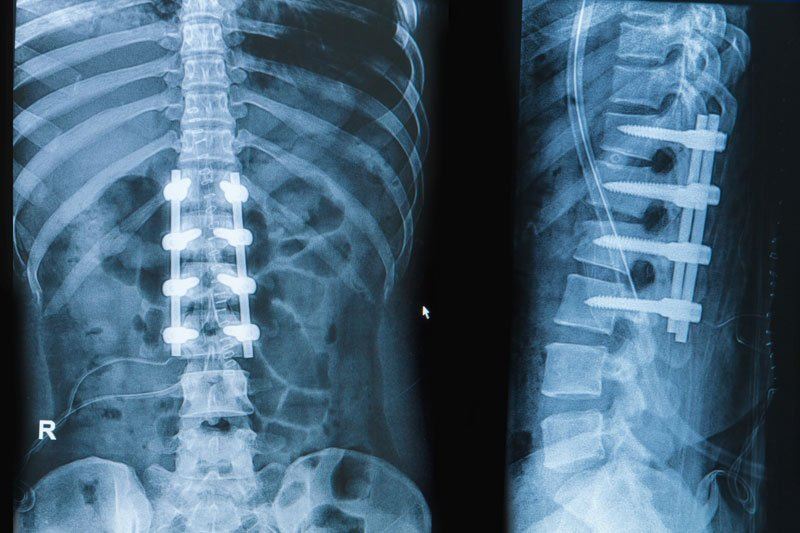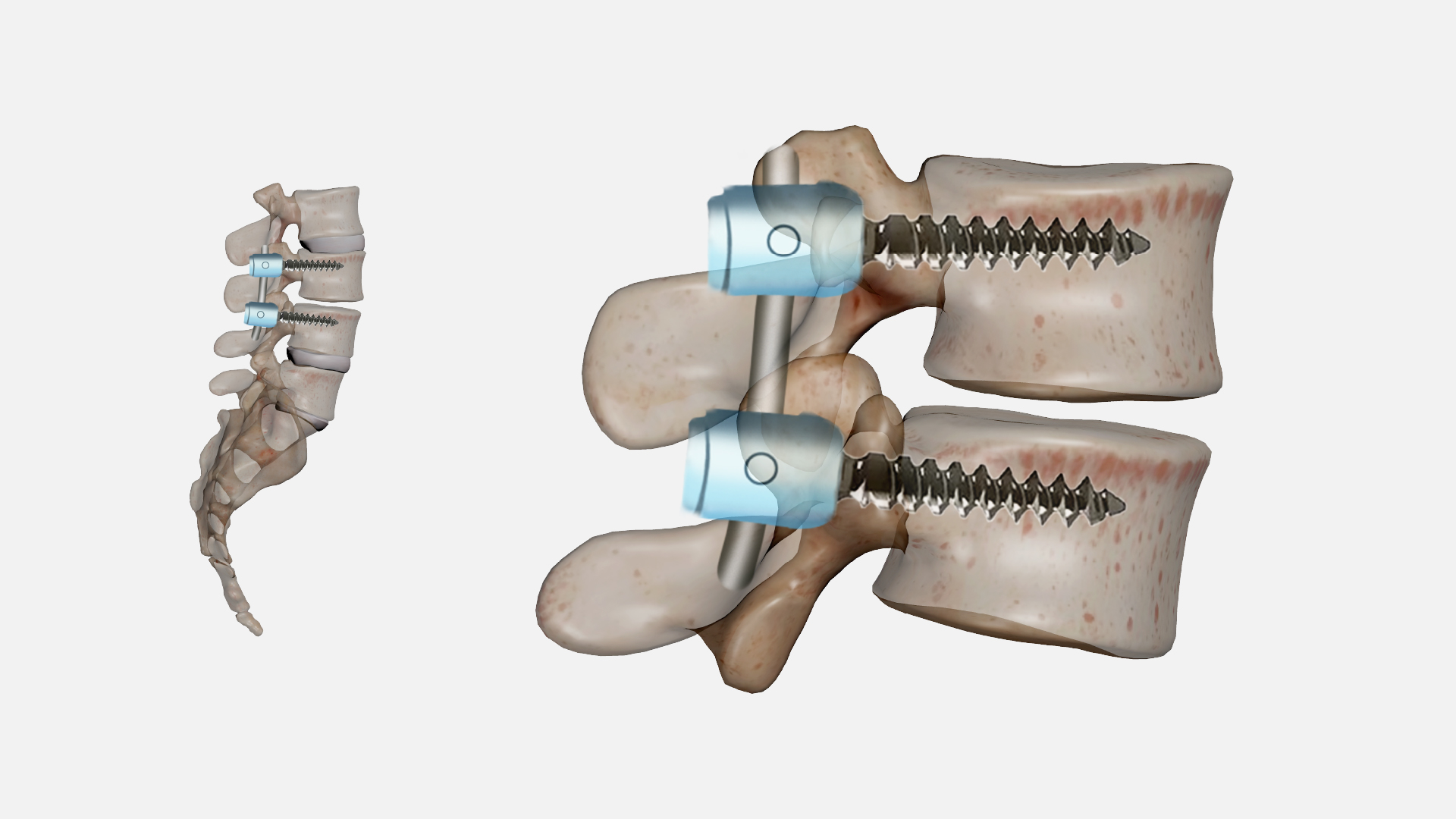Spinal fusion
Spinal Fusion and VA Disability
Damage to the spine from intense physical strain, injuries, or ongoing stress on joints is common among veterans. Persistent back pain can require some veterans to undergo spinal fusion surgery to eliminate pain and make it easier to function again.
In other cases, spinal fusion can occur naturally, often resulting in loss of range of motion and severe hip pain and back pain. If your military service resulted in spinal fusion, naturally or surgically, you could be eligible for spinal fusion VA disability benefits.
Back pain and spine impairment can have a negative impact on a veteran’s ability to sit at a desk, stand for long periods of time, and perform physical labor at work.
This article is an overview of what spinal fusion is, what conditions might lead to spinal fusion, and how you can earn a VA disability rating for spinal fusion.


Spinal issues in veterans
Spine impairment and pain is one of the leading causes of disability among veterans. More specifically, issues related to cervical and lumbosacral strain currently make up the fifth most commonly service-connected conditions.
Strain and other spinal issues can be caused by in-service injury, joint overuse and wear and tear, heavy lifting, and other accidents in training or combat. Upon discharge, some veterans may find that performing everyday tasks at home and in the workplace are more difficult than before they began experiencing spine and back issues.
VA disability rating for spinal fusion
Fortunately, the VA recognizes spinal fusion, and conditions that require spinal fusion, as potentially disabling.
The VA rates spinal fusion under diagnostic code 5241, which uses the criteria in the General Rating Formula for Diseases and Injuries of the Spine. This formula is mostly based on the range of motion of the spine, meaning how well you can move your spine forward, backward, left, and right. In the ratings table below, you’ll see the term “flexion” being used to describe this range of motion. You’ll also see the terms “unfavorable ankylosis” (when your spine is stuck in flexion or extension) and “favorable ankylosis” (when your spine is stuck in an upright position).
In addition to your range of motion, the VA considers your level of pain while in motion and how your back condition impacts your life. VA ratings for spinal fusion can be between 10% and 100%.
General Rating Formula for Diseases and Injuries of the Spine:
Description |
VA Rating |
|---|---|
Unfavorable ankylosis |
100% |
Unfavorable ankylosis of the entire thoracolumbar spine |
50% |
Unfavorable ankylosis of the entire cervical spine OR
|
40% |
Forward flexion of the cervical spine 15 degrees or less OR
|
30% |
Forward flexion of the thoracolumbar spine greater than 30 degrees but not greater than 60 degrees OR the following:Forward flexion of the cervical spine greater than 15 degrees but not greater than 30 degreesThe combined range of motion of the thoracolumbar spine but not greater than 120 degreesA combined range of motion of the cervical spine not greater than 170 degreesMuscle spasm or guarding severe enough to result in an abnormal gait or abnormal spinal contour (i.e. scoliosis, etc.) |
20% |
Forward flexion of the thoracolumbar spine greater than 60 degrees but not greater than 85 degrees OR the following:Forward flexion of the cervical spine greater than 30 degrees but not greater than 40 degreesCombined range of motion of the thoracolumbar spine greater than 120 degrees but not greater than 170 degrees but not greater than 335 degreesMuscle spasm, guarding or localized tenderness not affecting gait or spinal contourVertebral body fracture with loss of 50% or more of height |
10% |
In certain circumstances, surgical spinal fusion could also qualify you for a temporary 100% disability rating, depending on the length of your hospitalizations and any immobilization.
Service connecting spinal fusion
In order to be eligible for VA benefits for spinal fusion, your back condition that requires spinal fusion must have been caused or aggravated by your military service.
Back conditions and diseases that may require spinal fusion include:
- Injury
- Arthritis
- Degenerative disc disease
- Scoliosis
- Infection in the spinal column
- Tumor in the spinal column
- Spinal stenosis
- Break/fracture in spinal column
Military service can put a lot of stress on the body. Osteoarthritis, for example, can develop from falls, accidents, physical strain, and joint overuse while in service. Many veterans suffer from osteoarthritis that may require spinal fusion to correct. If your service-connected osteoarthritis led to spinal fusion, you could be owed VA disability compensation for both.
As mentioned above, spinal fusion can also occur naturally if you develop ankylosing spondylitis. Ankylosing spondylitis is rated under diagnostic code 5240 using the same general rating formula as spinal fusion.
As with any surgery, there are possible risks to surgical spinal fusions, and some of those complications, such as long-term nerve damage caused by service-connected spinal fusion, could be a secondary condition for added compensation.
Some veterans may not realize that their spinal fusion is related to military service. If you’re unsure of how to service connect your back condition that requires spinal fusion, a VA-accredited attorney may be able to help you gather the necessary evidence to prove your conditions are service connected and get your spinal fusion VA disability rating.
TDIU for back problems
Back pain can have a negative effect on many aspects of your life, and can lead to:
The inability to perform physical labor
Difficulty sitting at a desk due to stiffness and pain
Increased absences at work
Difficulty sleeping
Mental health problems
For veterans who are unable to work due to severe back problems and related pain, total disability based on individual employability (TDIU) could be granted. TDIU pays the same monthly rate as a 100% rating, without the 100% rating requirement.
In order to be eligible for TDIU, you must:
1
At least one service-connected disability rated at 60% or more disabling OR
2
Two or more service-connected disabilities with at least one rated at 40% or more disabling and a combined rating of 70% or more
How our VA disability lawyers can help?
If you’re a veteran who was denied benefits for spinal fusion or feel your rating decision was too low, the VA-accredited attorneys at VA Benefits can help. You don’t pay us a dime unless we win your case. Contact us and start your free consultation today.
